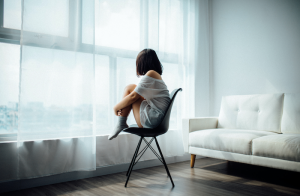How to Survive Seasonal Affective Disorder this Winter
In any year, it’s thought that about five percent of the US population experiences seasonal affective disorder (SAD). Four out of five people with SAD or seasonal depression are women. Millions of people may suffer from the condition and not even know it. As a type of depression, people with SAD can feel overwhelming feelings of sadness and symptoms that can majorly impact their quality of life.
What is Seasonal Affective Disorder?
As the name suggests, one of the characteristics of SAD is that it follows a seasonal pattern. The Diagnostic Manual of Mental Disorders defines the condition as a major depressive disorder with a seasonal pattern. Typically, it occurs during the winter season, but it can also affect people in other seasons.
For most people, symptoms start to occur in the fall and continue into the winter months as exposure to sunlight decreases. Symptoms in the spring and summer months are less common but do occur. In general, SAD is more than the “winter blues”; it can be very severe and utterly debilitating for some.
Seasonal Affective Disorder Symptoms and Causes
The precise cause of seasonal affective disorder is unknown, but it’s thought that shorter days and less sunlight could play a role in creating a chemical change in the brain. The sleep hormone melatonin may also influence SAD as the body makes more melatonin when it’s dark. As the days are shorter and darker, your body produces more melatonin, making you sleepier. Although researchers don’t know exactly what causes SAD, other theories suggest the following could contribute:
-
Vitamin d deficiency
-
Biological clock change
-
Brain chemical imbalance
SAD is a subtype of depression rather than a separate condition. So, people who have SAD tend to have symptoms of depression, including:
-
Anxiety
-
Sadness
-
Feeling hopeless or worthless
-
Suicidal thoughts
-
Extreme fatigue
-
Irritability
-
Limbs feeling heavy
-
Loss of interest in usual activities
How to Cope with Seasonal Affective Disorder
The treatment for seasonal affective disorder during the winter months can include one or a combination of approaches depending on the individual, including medications, light therapy, and psychotherapy.
-
Light Therapy
Light therapy is an option when you can’t increase your exposure to light through sunlight. In the winter, it’s tough to get out in the sunshine, and by the time you finish work, it’s dark outside. Light therapy involves being in front of a light therapy box that mimics natural light. Usually, you would sit in front of the box for twenty minutes first thing in the morning when you wake up.
While research into light therapy is somewhat limited, it appears to be effective in treating SAD. It’s often the first-line treatment for fall-onset SAD. It works by creating a chance in brain chemicals that affect your mood.
-
Psychotherapy
Psychotherapy or talk therapy is another option for treating SAD. Cognitive-behavioral therapy (CBT) helps change thoughts about yourself or your environment. CBT can help you identify and change negative thoughts, find healthy ways to cope with SAD and learn how to manage stress and anxiety.
Read more about seasonal affective disorder and cognitive behavioral therapy.
-
Antidepressants
Depression is often treated through a combination of medications and alternative therapies. Some people may benefit from antidepressants, especially those with severe symptoms. These prescription medicines may help with SAD symptoms by correcting a chemical imbalance. Making the decision to take antidepressants is a personal one and something to discuss with your doctor.
Read more about depression and antidepressants.
-
Lifestyle Changes
In addition to the treatment plan you discuss with your doctor, they may suggest lifestyle changes. This could include a regular exercise routine, getting outside for a lunchtime walk, and making your environment brighter.
Depression that starts when the winter season hits may signify seasonal affective disorder. If you find that your symptoms start and fall in a seasonal pattern, particularly this time of year, you may feel drained of energy and even struggle with your day-to-day life. If you feel like this could be you, it’s important that you seek professional help and speak to your doctor, who can help to create a treatment plan that works for you.
Join Our Community
Archives
- January 2023
- December 2022
- September 2022
- August 2022
- June 2022
- May 2022
- April 2022
- March 2022
- February 2022
- January 2022
- December 2021
- November 2021
- October 2021
- September 2021
- August 2021
- July 2021
- June 2021
- May 2021
- March 2021
- September 2020
- August 2020
- July 2020
- June 2020
- May 2020
- April 2020
- March 2020
- February 2020
Subscribe

Sign up to receive FREE toolkit
From Dr. Hyman, #1 NY Times & Amazon Author
We never spam or sell your e-mail






Follow Our Every Move